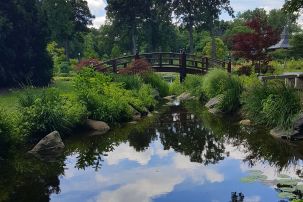Lesson summary
In this practical and hands-on activity students complete a biodiversity assessment of their school. They begin by creating definitions for habitat terms, and then calculate the habitat percentage cover of different cover types (tree cover, roof cover, soft surfaces/grass, and hard surfaces) using a map of the school grounds. Through authentic learning experiences students assess the schools natural resources and where there is opportunities for further actions. Students create a biodiversity improvement development plan.
Learning intentions:
Students will...
- understand that there are a range of habitats at their school.
- understand how to use maps to calculate the percentage of cover types at their school.
- recognise how their biodiversity at their school can be improved.
- create action plans to address natural resource management issues and increase local biodiversity.
Lesson guides and printables
Lesson details
Curriculum mapping
Australian Curriculum content descriptions:
Science Year 5:
- Living things have structural features and adaptations that help them to survive in their environment (ACSSU043)
Geography Year 5:
- Locate and collect relevant information and data from primary and secondary sources (ACHASSI095)
- Organise and represent data in a range of formats including tables, graphs and large- and small-scale maps, using discipline-appropriate conventions (ACHASSI096)
- Present ideas, findings, viewpoints and conclusions in a range of texts and modes that incorporate source materials, digital and non-digital representations and discipline-specific terms and conventions (ACHASSI105)
Science Year 6:
- The growth and survival of living things are affected by the physical conditions of their environment (ACSSU094)
Geography Year 6:
- Locate and collect relevant information and data from primary and secondary sources (ACHASSI123)
- Organise and represent data in a range of formats including tables, graphs and large- and small-scale maps, using discipline-appropriate conventions (ACHASSI124)
- Present ideas, findings, viewpoints and conclusions in a range of texts and modes that incorporate source materials, digital and non-digital representations and discipline-specific terms and conventions (ACHASSI133)
Cross curriculum priorities:
Sustainability OI.1 – The biosphere is a dynamic system providing conditions that sustain life on Earth. O1.2 -All life forms, including human life, are connected through ecosystems on which they depend for their wellbeing and survival.
General capabilities: Critical and creative thinking
Syllabus Outcomes: GE3-4, ST3-10LW, ST3-11LW.
Connecting lessons: Native animal identification – must be completed as a compulsory action.
Resources required
- Internet access
- student worksheet
- maps of school grounds (from Google Maps)
- ruler
- pencil
- materials for making maps.
Additional info
This lesson can be used when working on the Biodiversity Module of ResourceSmart AuSSI Vic Certification. By completing this lesson you will have completed the following actions:
Biodiversity Checklist Compulsory Actions:
- A1 – Have you completed biodiversity assessments for your school’s grounds, including the identification and recording of:
- Indigenous/native plants and animal habitat quality e.g. trees, understorey, ground cover weeds and soil management?
- Linkages of school vegetation and habitats with surrounding areas?
- A1 – Has your Habitat Quality Assessment score been entered as your baseline data?


Welcome back!
Don't have an account yet?
Log in with:
By signing up to Cool.org you consent and agree to Cool's privacy policy to
store, manage and process your personal information. To read more, please see
our privacy policy here(Opens in new tab).
Create your free Cool.org account.
Many of our resources are free, with an option to upgrade to Cool+ for premium content.
Already have an account?
Sign up with:
By signing up to Cool.org you consent and agree to Cool's privacy policy to
store, manage and process your personal information. To read more, please see
our privacy policy here(Opens in new tab).